How Does Custom Waveguide Unmatched Termination Reduce Power Loss in High-Frequency Radar Systems?
High-frequency radar systems demand exceptional precision and efficiency to maintain optimal performance across challenging operational environments. One critical component that significantly impacts system effectiveness is the waveguide unmatched termination, which serves as a specialized solution for managing signal integrity and minimizing power loss. Custom waveguide unmatched termination reduces power loss in high-frequency radar systems by providing controlled signal absorption while maintaining predetermined reflection characteristics that prevent destructive interference patterns. Unlike matched terminations that aim for complete signal absorption, unmatched terminations are engineered with specific VSWR values between 1.2-2.0, creating deliberate reflection patterns that optimize signal distribution and enhance overall system performance. This sophisticated approach ensures that radar systems operate with maximum efficiency while maintaining the precise signal characteristics required for accurate target detection and tracking capabilities.
Understanding the Technical Principles Behind Waveguide Unmatched Termination Design
Fundamental Wave Propagation Mechanics in Unmatched Systems
The physics behind waveguide unmatched termination effectiveness lies in the controlled manipulation of electromagnetic wave propagation within confined waveguide structures. When electromagnetic energy travels through a waveguide system, it encounters various impedance discontinuities that can create unwanted reflections and standing wave patterns. Waveguide unmatched termination devices are specifically engineered to create predetermined reflection coefficients that work in harmony with the overall system architecture rather than against it. This approach differs fundamentally from traditional matched terminations, which attempt to absorb all incident energy completely.The controlled reflection mechanism inherent in waveguide unmatched termination systems allows engineers to fine-tune the impedance characteristics of complex radar networks. By implementing terminations with carefully calibrated VSWR values, typically ranging from 1.2 to 2.0, designers can create beneficial interference patterns that enhance signal strength in critical areas while attenuating unwanted components. This selective reflection approach proves particularly valuable in phased array radar systems where precise amplitude and phase control across multiple elements determines overall system performance and beam steering accuracy.
Impedance Matching Optimization Strategies
Advanced impedance matching techniques employed in waveguide unmatched termination systems leverage sophisticated mathematical models to predict and control reflection behavior across wide frequency ranges. The optimization process involves careful analysis of the waveguide geometry, material properties, and operating frequency bands to achieve the desired reflection characteristics. Engineers utilize electromagnetic field simulation software to model the complex interactions between incident waves and the termination structure, ensuring that the resulting impedance profile supports optimal power transfer while maintaining the necessary reflection properties.The implementation of waveguide unmatched termination requires precise understanding of the relationship between physical geometry and electrical performance. The termination structure must be designed to provide consistent VSWR characteristics across the entire operating bandwidth, typically spanning frequencies up to 110 GHz in modern high-performance systems. This wide frequency coverage necessitates careful consideration of frequency-dependent material properties and dimensional tolerances that could affect the termination's performance. Advanced manufacturing techniques and quality control procedures ensure that each waveguide unmatched termination meets strict specifications for VSWR accuracy, typically maintaining tolerances within ±0.02 across the full operational bandwidth.
Signal Integrity Preservation Mechanisms
The preservation of signal integrity represents a critical function of properly designed waveguide unmatched termination systems in high-frequency radar applications. Signal integrity encompasses multiple aspects including amplitude stability, phase coherence, and spectral purity, all of which directly impact radar system performance. Waveguide unmatched termination devices contribute to signal integrity by providing stable, predictable reflection characteristics that enable precise calibration and compensation techniques throughout the radar system architecture.Modern radar systems operating at millimeter-wave frequencies face unique challenges related to signal degradation and noise accumulation. Waveguide unmatched termination components address these challenges by maintaining consistent electrical characteristics across temperature variations and mechanical stress conditions. The robust construction and material selection employed in these terminations ensure long-term stability and reliability, which proves essential for radar systems deployed in harsh environmental conditions. Advanced materials and surface treatments further enhance the termination's ability to maintain signal integrity over extended operational periods, reducing maintenance requirements and improving overall system availability.
Power Loss Reduction Mechanisms in Modern Radar Architectures
Absorption Efficiency Enhancement Techniques
The enhancement of absorption efficiency in waveguide unmatched termination systems represents a sophisticated balance between controlled reflection and effective power dissipation. Unlike conventional matched loads that aim for complete absorption, unmatched terminations are designed to absorb specific portions of incident power while reflecting predetermined amounts back into the system. This selective absorption approach proves particularly beneficial in complex radar architectures where multiple signal paths and feedback loops require careful power management to maintain optimal performance levels.Advanced absorption materials and geometric configurations employed in waveguide unmatched termination devices utilize cutting-edge electromagnetic absorber technologies. These materials are engineered to provide frequency-selective absorption characteristics that complement the overall system design requirements. The absorption efficiency is optimized through careful selection of material properties including dielectric constant, loss tangent, and thermal conductivity. This multi-parameter optimization ensures that the waveguide unmatched termination provides consistent performance across wide temperature ranges while maintaining the necessary power handling capabilities for high-power radar applications.The thermal management aspects of absorption efficiency represent critical design considerations for waveguide unmatched termination systems operating in high-power radar environments. Effective heat dissipation mechanisms are integrated into the termination design to prevent thermal degradation of the absorbing materials and maintain consistent electrical performance. Advanced thermal modeling techniques are employed to predict and optimize heat distribution patterns within the termination structure, ensuring that temperature gradients do not adversely affect the absorption characteristics or introduce unwanted thermal noise into the radar system.
Reflection Control and Power Distribution Optimization
The strategic control of reflection characteristics in waveguide unmatched termination systems enables sophisticated power distribution optimization throughout complex radar architectures. By implementing terminations with carefully calibrated reflection coefficients, engineers can create beneficial interference patterns that enhance signal strength in critical areas while reducing power consumption in less critical sections. This approach allows for more efficient utilization of available power resources, extending operational range and improving overall system performance.Power distribution optimization through waveguide unmatched termination implementation requires comprehensive analysis of the entire radar system architecture. Engineers must consider the complex interactions between multiple termination points, waveguide junctions, and active components to achieve optimal power allocation. Advanced modeling techniques and simulation tools enable designers to predict and optimize these interactions, ensuring that each waveguide unmatched termination contributes positively to the overall system performance while maintaining the necessary reflection characteristics for proper operation.The dynamic nature of modern radar systems, including beam steering and adaptive processing capabilities, places additional demands on waveguide unmatched termination performance. These terminations must maintain consistent reflection characteristics across varying operational conditions, including different beam positions, target scenarios, and environmental conditions. Advanced design techniques and high-quality manufacturing processes ensure that waveguide unmatched termination devices provide stable, predictable performance throughout the full range of operational parameters encountered in modern radar applications.
Frequency Response Characteristics and Bandwidth Optimization
The frequency response characteristics of waveguide unmatched termination systems play a crucial role in determining overall radar system performance across wide operational bandwidths. Modern radar systems often require operation across multiple frequency bands simultaneously, necessitating termination designs that maintain consistent performance characteristics throughout these extended frequency ranges. The careful optimization of frequency response ensures that power loss remains minimal while maintaining the necessary reflection properties across all operational frequencies.Bandwidth optimization in waveguide unmatched termination designs involves sophisticated electromagnetic modeling and analysis techniques to predict and control the frequency-dependent behavior of the termination structure. Engineers utilize advanced simulation tools to model the complex electromagnetic interactions within the termination across wide frequency ranges, identifying potential resonances or performance degradation points that could affect radar system operation. This comprehensive analysis enables the development of termination designs that provide consistent performance across frequencies extending up to 110 GHz and beyond.The implementation of wide-bandwidth waveguide unmatched termination systems requires careful consideration of manufacturing tolerances and material properties that could affect frequency response characteristics. Advanced manufacturing techniques and quality control procedures ensure that each termination meets strict specifications for frequency response consistency, maintaining the necessary VSWR characteristics across the entire operational bandwidth. This attention to detail proves essential for radar systems operating across multiple frequency bands or utilizing frequency-agile operation modes.
Implementation Strategies for High-Performance Radar Systems
Integration Considerations for Complex Radar Architectures
The successful integration of waveguide unmatched termination systems into complex radar architectures requires comprehensive understanding of system-level interactions and performance requirements. Modern radar systems incorporate multiple subsystems including transmitters, receivers, signal processing units, and antenna arrays, each with specific interface requirements and performance specifications. Waveguide unmatched termination devices must be carefully selected and positioned to optimize overall system performance while maintaining compatibility with existing system components and interfaces.Integration planning for waveguide unmatched termination systems involves detailed analysis of signal flow paths, power distribution networks, and control systems throughout the radar architecture. Engineers must consider the impact of termination placement on overall system performance, including effects on beam patterns, side lobe levels, and signal-to-noise ratios. Advanced system modeling techniques enable designers to predict and optimize these interactions, ensuring that each waveguide unmatched termination contributes positively to overall radar system performance while meeting specific interface requirements.The mechanical integration aspects of waveguide unmatched termination systems require careful consideration of mounting configurations, thermal management, and accessibility for maintenance operations. These terminations must be designed to integrate seamlessly with existing waveguide networks while providing reliable mechanical connections that maintain electrical performance over extended operational periods. Advanced mechanical design techniques and high-quality materials ensure that waveguide unmatched termination devices provide stable, reliable performance throughout the full range of environmental conditions encountered in radar system deployments.
Customization Approaches for Specific Application Requirements
The customization of waveguide unmatched termination systems for specific radar applications involves detailed analysis of performance requirements, operational conditions, and system constraints. Each radar application presents unique challenges and requirements that must be addressed through careful termination design and optimization. Advanced Microwave Technologies Co., Ltd. provides extensive customization capabilities, allowing engineers to tailor termination characteristics to meet specific frequency ranges, power handling requirements, and environmental conditions.Customization processes for waveguide unmatched termination systems begin with comprehensive analysis of the target application requirements, including frequency bands, power levels, environmental conditions, and interface specifications. Engineers work closely with customers to understand specific performance requirements and operational constraints, developing termination designs that optimize performance for the intended application. This collaborative approach ensures that each waveguide unmatched termination provides optimal performance while meeting all necessary specifications and requirements.The flexibility of customization options available for waveguide unmatched termination systems enables engineers to address even the most demanding radar applications. Custom materials, geometries, and interface configurations can be developed to meet specific requirements, ensuring optimal integration and performance. Advanced manufacturing capabilities and quality control procedures ensure that each custom waveguide unmatched termination meets strict specifications for performance, reliability, and long-term stability.
Quality Assurance and Performance Validation Protocols
The implementation of comprehensive quality assurance and performance validation protocols ensures that waveguide unmatched termination systems meet all necessary specifications and requirements for high-performance radar applications. Advanced testing procedures and measurement techniques are employed to verify electrical performance, mechanical integrity, and environmental compatibility throughout the manufacturing and delivery process. These protocols ensure that each termination provides consistent, reliable performance throughout its operational lifetime.Performance validation for waveguide unmatched termination systems involves sophisticated measurement techniques and specialized test equipment capable of operating across wide frequency ranges. Advanced Microwave Technologies Co., Ltd. operates state-of-the-art laboratories equipped with measurement equipment extending up to 110 GHz, enabling comprehensive characterization of termination performance across all relevant frequency bands. These measurements verify VSWR characteristics, power handling capabilities, and long-term stability under various environmental conditions.The quality assurance processes implemented for waveguide unmatched termination systems incorporate multiple levels of inspection and testing to ensure consistent product quality and performance. ISO 9001:2015 certification demonstrates the company's commitment to quality management systems that ensure consistent product quality and customer satisfaction. Environmental management systems certified to ISO 14001:2015 standards ensure that manufacturing processes minimize environmental impact while maintaining high quality standards. Occupational health and safety management systems meeting ISO 45001:2018 requirements ensure safe working conditions for all personnel involved in the manufacturing and testing processes.
Conclusion
Custom waveguide unmatched termination solutions represent a critical advancement in high-frequency radar system optimization, offering sophisticated power loss reduction capabilities while maintaining essential signal integrity characteristics. Through careful design and implementation of controlled reflection mechanisms, these specialized components enable radar systems to achieve superior performance across wide operational bandwidths while minimizing power consumption and maximizing operational efficiency. The integration of advanced materials, precise manufacturing techniques, and comprehensive quality assurance protocols ensures reliable, long-term performance in demanding operational environments.
Ready to optimize your high-frequency radar system performance with custom waveguide unmatched termination solutions? Advanced Microwave Technologies Co., Ltd. brings over 20 years of expertise in microwave technology, supported by state-of-the-art 24m microwave darkroom facilities and advanced measurement equipment up to 110 GHz. Our ISO-certified quality management systems and comprehensive OEM services ensure that your specific requirements are met with precision and reliability. Whether you're developing next-generation radar systems for aerospace, defense, or telecommunications applications, our expert engineering team provides complete technical support from prototyping through full-scale production. Contact our specialists today at craig@admicrowave.com to discuss your custom waveguide unmatched termination requirements and discover how our solutions can enhance your system performance while reducing power loss and operational costs.
References
1.Pozar, D.M. (2011). Microwave Engineering, 4th Edition. John Wiley & Sons, New York.
2.Collin, R.E. (2001). Foundations for Microwave Engineering, 2nd Edition. IEEE Press, Piscataway.
3.Marcuvitz, N. (1986). Waveguide Handbook. Institution of Engineering and Technology, London.
4.Ramo, S., Whinnery, J.R., and Van Duzer, T. (1994). Fields and Waves in Communication Electronics, 3rd Edition. John Wiley & Sons, New York.
5.Balanis, C.A. (2016). Advanced Engineering Electromagnetics, 2nd Edition. John Wiley & Sons, Hoboken.
6.Harrington, R.F. (2001). Time-Harmonic Electromagnetic Fields. IEEE Press, Piscataway.
YOU MAY LIKE
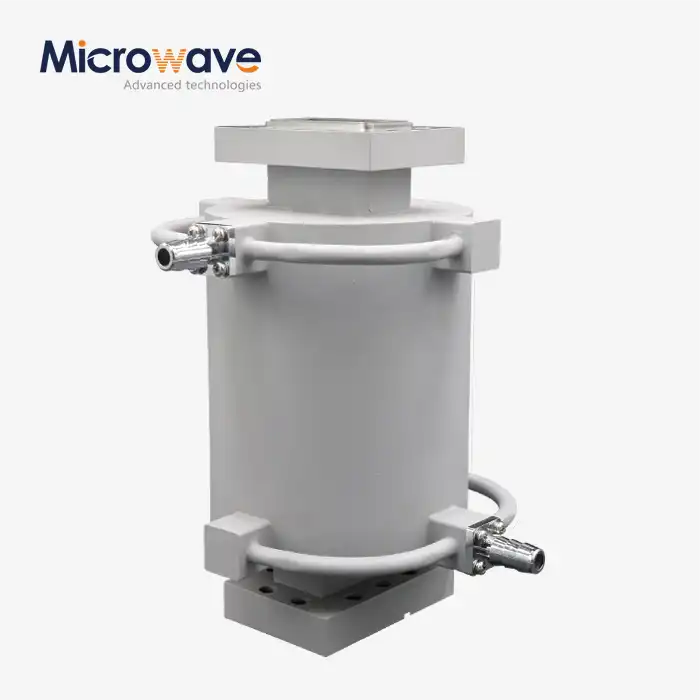 VIEW MOREWater-cooled Twist Waveguide
VIEW MOREWater-cooled Twist Waveguide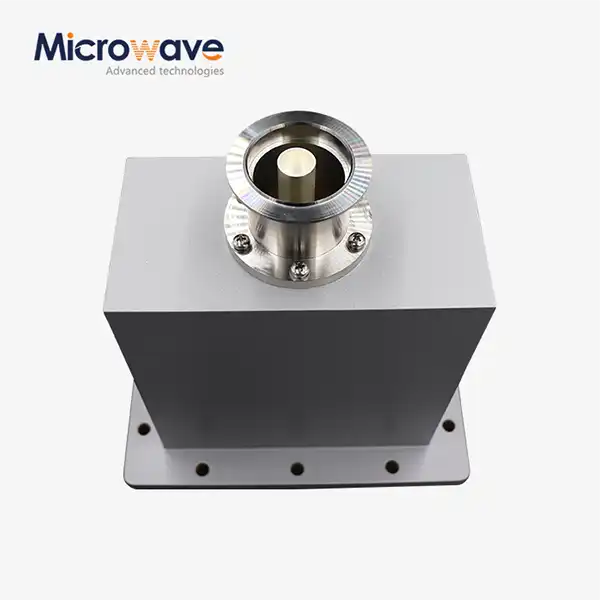 VIEW MOREEnd Launch Waveguide to Coaxial Adapter
VIEW MOREEnd Launch Waveguide to Coaxial Adapter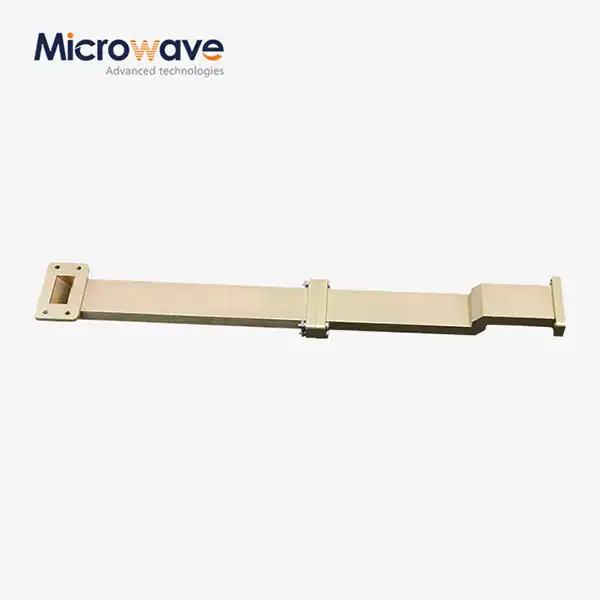 VIEW MOREWG Transition
VIEW MOREWG Transition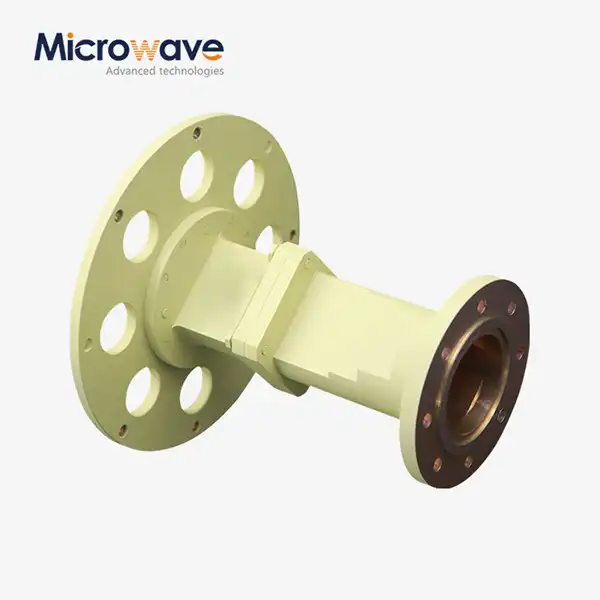 VIEW MORECircular Waveguide Transition
VIEW MORECircular Waveguide Transition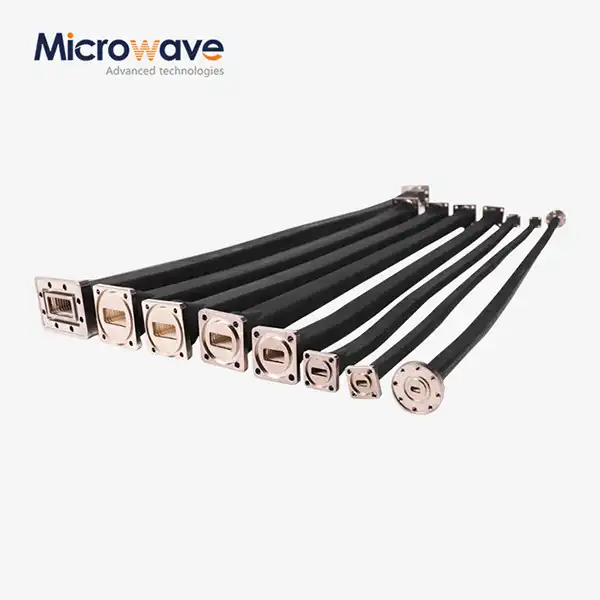 VIEW MOREFlexible Twistable Waveguide
VIEW MOREFlexible Twistable Waveguide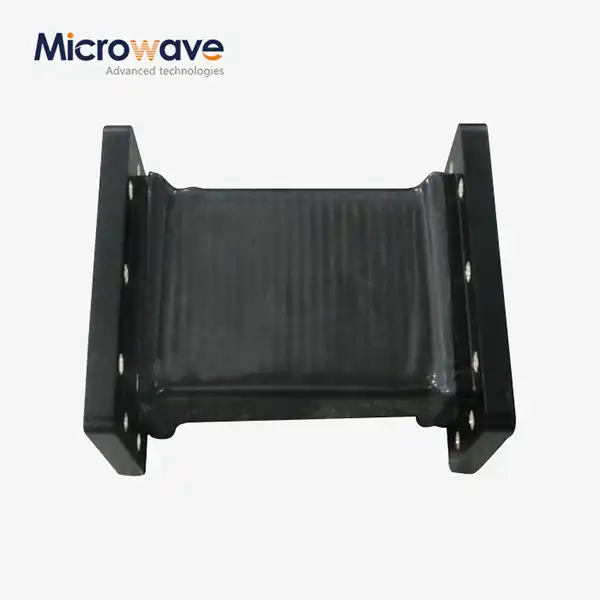 VIEW MOREFlexible Seamless Waveguide
VIEW MOREFlexible Seamless Waveguide VIEW MORERight Angle Waveguide To Coaxial Adapter
VIEW MORERight Angle Waveguide To Coaxial Adapter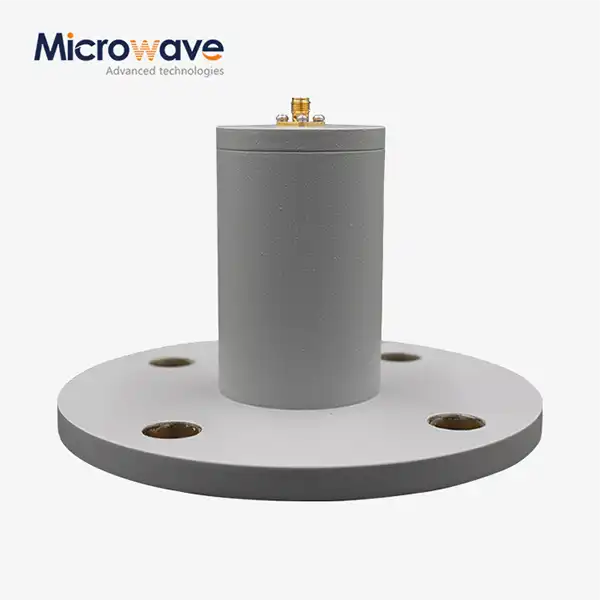 VIEW MORECircular Waveguide To Coaxial Adapter
VIEW MORECircular Waveguide To Coaxial Adapter




